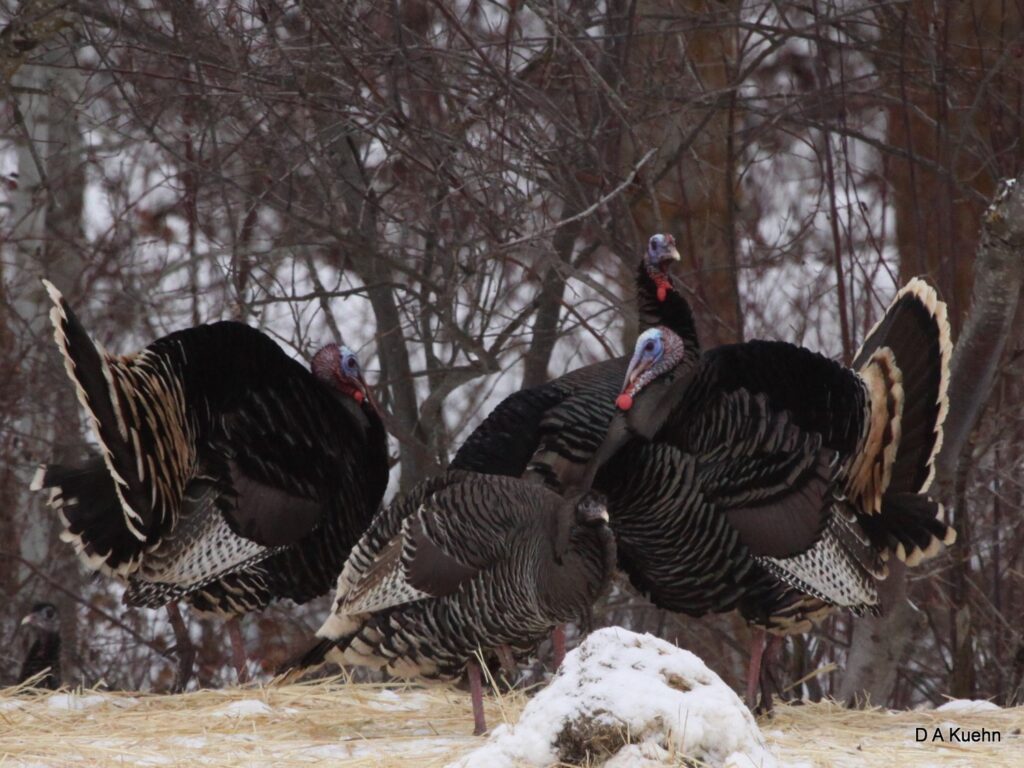
Chapter 2 – February 19, 2021
It may be cold now, but turkey season will heat up soon
By Kelly Riordan/WDFW
Frigid temperatures reveal icy mornings, and for would-be turkey hunters, now is the time to get scouting, patterning flocks, and researching your hunting access.
Washington’s wild turkey has its own strategy for staying warm and safe while finding food during winter and early spring. Wintertime flocking consists of a few instinctual factors to provide the aforementioned safety and food sources. Usually, wintering birds will form large social flocks for a “safety in numbers” strategy. Winter flocks may also incorporate many social groups that travel in a larger area than their normal home range in search of quality forage. This can often mean birds will congregate near hay barns and stockyards. Removing bird feeders and putting up netting, fencing, and other deterrents can help prevent conflicts with turkeys. More information on preventing conflicts is available here.
The behavior of winter flocks can differ dramatically from other times of year, with flocks operating as a group and requiring lots of forage. The interesting behaviors of winter flocks can influence the smaller flocks that become the groups of birds we hunt in early spring, according to a National Wild Turkey Federation column.

Hunters can look for these large flocks as opposed to searching for individual birds or listening for gobblers during winter and early spring. Once located, keep in mind that the mass of birds may only hold in its current location until the food source dries up or breeding season begins. Private landowners may welcome hunters to help manage these flocks if they’re still feeding on haystacks or other commodities when hunting season begins.
Accessing Private Land
If you’ve located birds but they are on posted private land, you have a couple options. You can seek permission from the landowner, which can often lead to an annual hunting property for future seasons. For best success, contact the landowner well in advance of when you’re planning to hunt. Also, you can explore the WDFW Private Lands hunting access page to search lands that may have ample numbers of turkeys on them. We have partnered with many landowners who allow access to thousands of acres of private lands.
Additionally, hunters can find public and private lands using cellphone apps that will show you exactly who owns the land. Once the landowner has been identified, hunters will need to gain permission prior to accessing the land. See this excellent article from the National Wild Turkey Federation for some great tips on asking landowner permission.
With just a couple of easy-to-find-and-use tools, turkey hunters can narrow down huntable land and get an early jump on the season.
Check back for more info
Want more information? Come back to mywdfw.com regularly for articles like this and other useful tips and tactics on turkey hunting in Washington state. WDFW is putting a focus on wild turkeys over the next several weeks to help new hunters learn ahead of the spring general season opener on April 15. The monthly hunting highlights on myWDFW.com will be replaced with informative blog posts all about spring turkey hunting each week up until the opener.



